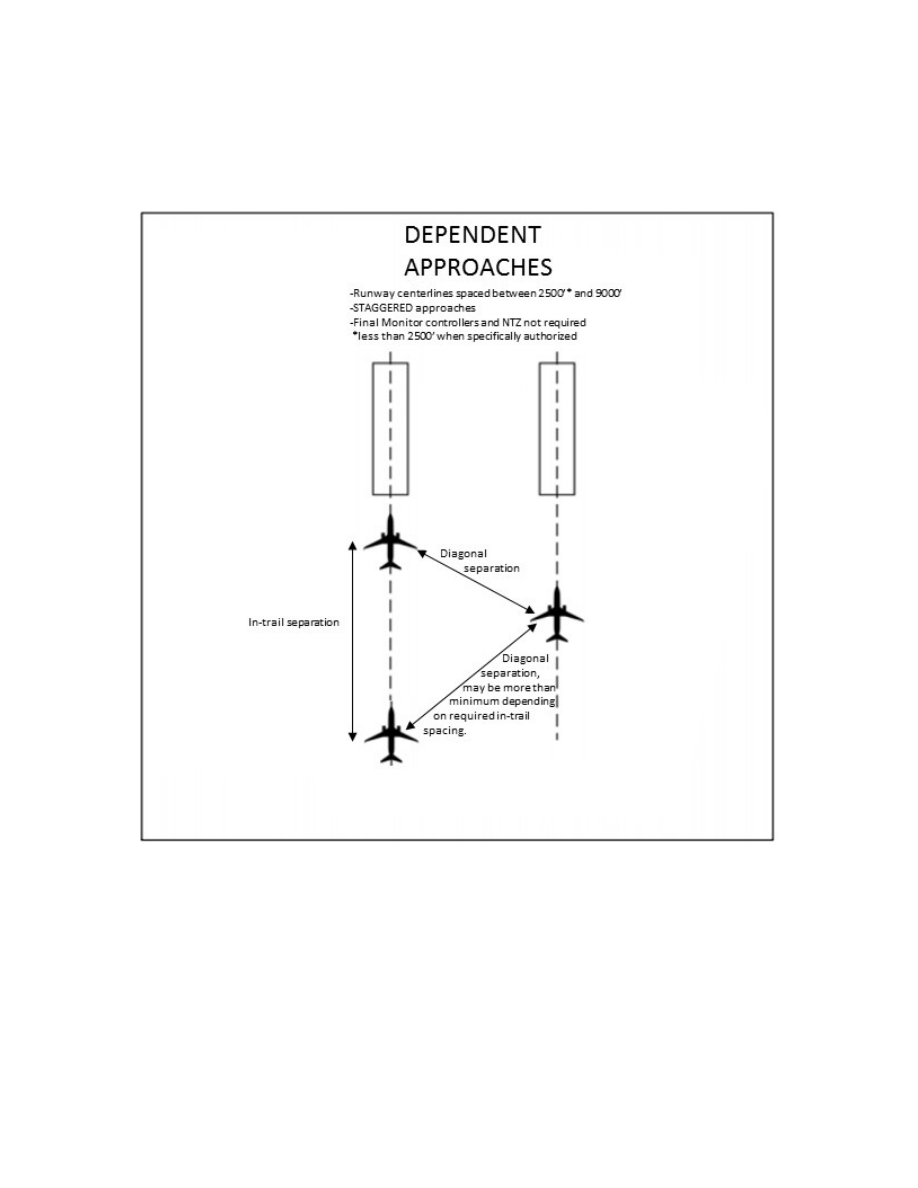
AIM
4/20/23
5
−
4
−
14. Simultaneous Dependent Approaches
FIG 5
−
4
−
21
Simultaneous Approaches
(Parallel Runways and Approach Courses)
a.
Simultaneous dependent approaches are an ATC procedure permitting approaches to airports having
parallel runway centerlines separated by at least 2,500 feet up to 9,000 feet. Integral parts of a total system are
ILS or other system providing approach navigation, radar, communications, ATC procedures, and required
airborne equipment. RNAV equipment in the aircraft or GLS equipment on the ground and in the aircraft may
replace the required airborne and ground based ILS equipment. Although non
−
precision minimums may be
published, pilots must only use those procedures specifically authorized by chart note. For example, the chart
note “LNAV NA during simultaneous operations,” requires vertical guidance. When given a choice, pilots
should always fly a precision approach whenever possible.
b.
A simultaneous dependent approach differs from a simultaneous independent approach in that, the
minimum distance between parallel runway centerlines may be reduced; there is no requirement for radar
monitoring or advisories; and a staggered separation of aircraft on the adjacent final course is required.
Arrival Procedures
5
−
4
−
42